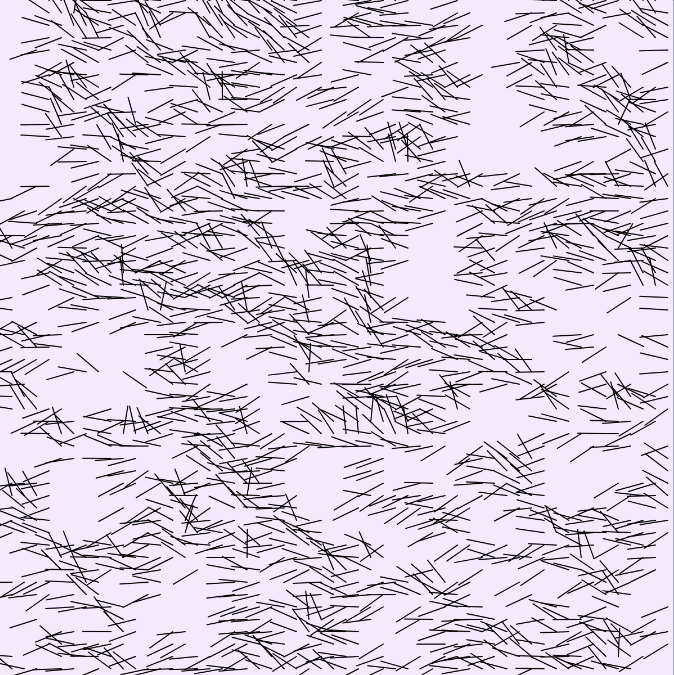- All the lines are the same length.
- The lines are small.
- The lines are black and the background is white.
- Their placings seem to have some kind of pattern.
- There are holes where there aren't any lines.
- Some of the lines create triangles or other shapes.
- Not all of the lines intersect with another line.
- There are around 50-60 lines per side.
- Most of the lines are vertical.
- Each line is rotated around its center.

I started out by writing some pseudocode on paper. I knew the general steps were to 1) create a grid of many small lines, all equal in length, and then 2) rotate each line with some kind of randomly calculated value (which I would soon learn is noise). Next I took to the p5.js editor and re-purposed some of the logic from my Intersections code: using two nested for loops, I began to create some lines. Using the i and j indices as x1 and y1 values, and assigning modified versions of those values to x2 and y2, the lines could stay the same length.
After that point, I got stuck. I understood that the rotations of the lines were not totally random, in that they depended on some kind of mathematical pattern, so I called Char over. She introduced noise fields, explained noise them in depth, and outlined all of the constants, variables, and parameters that I would need when using one in my code. After a lot of toying around with values, I came up with this version of Interruptions. It is not terribly similar to Molnar's versions, but I believe it is equally interesting. By trudging through this activity, I've learned that noise fields are super fascinating when visualized in this way, and that Molnar was an incredibly epic woman.